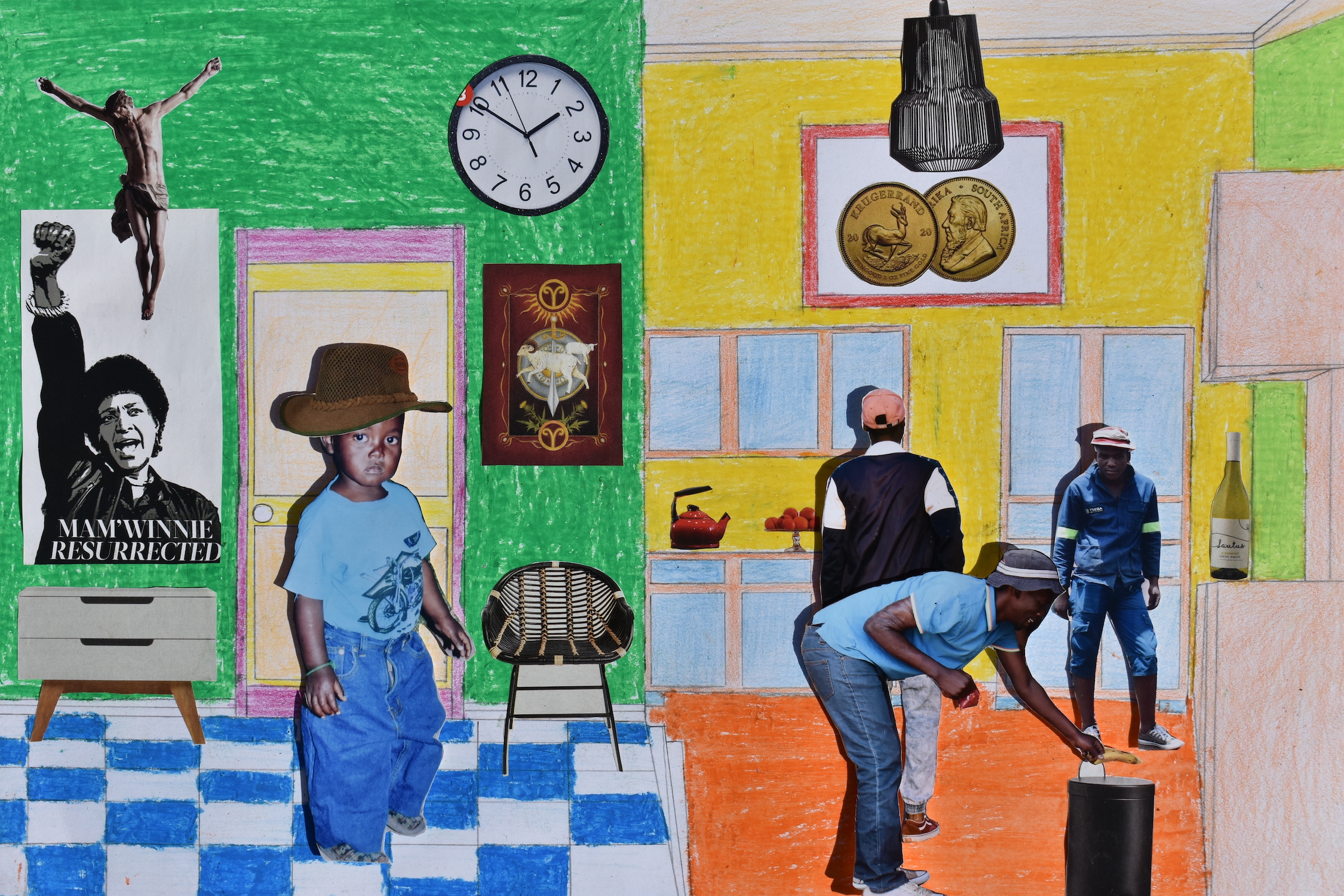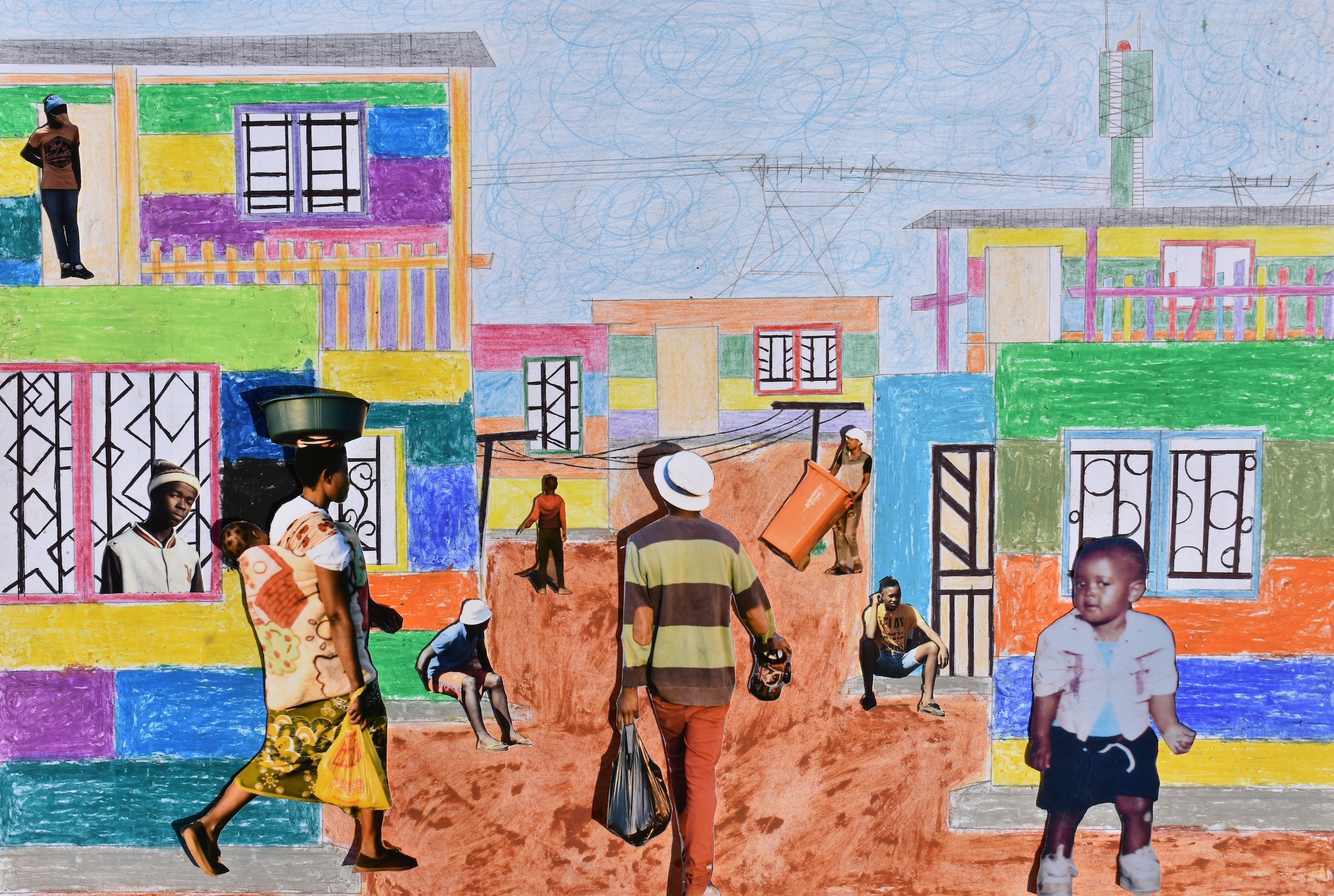Top Zinto. All images © Vuyo Mabheka
One to Watch Vuyo Mabheka plays with illustration, cut-outs and collage to depict the motion and difficulty of life in the zones
Born in 1999, Vuyo Mabheka is a visual artist and photographer originally from Libode, a small town in Eastern Cape, South Africa. He later moved to the Thokoza township, south-east of Johannesburg, and attended the Buhlebuzile Secondary School, where he was introduced to photography in 2017 through the Of Soul and Joy social and artistic initiative. Mabheka is still based in Thokoza, and his project Popihuise explores both his personal childhood experiences and the complexities of life in South African townships. “I grew up in an unstable home without a father figure; my family moved around a lot, one place after another,” he shares.
Each collage in the Popihuise series weaves together elements of memory and fantasy, combining photographs of people in Mabheka’s community and childhood snapshots from his family photos with cut-out pictures and illustrations. Drawing from life, he allows his imagination to roam free and encompasses other people’s experiences. “The work touches on the notion, ‘It takes a village to raise a child’, a reference to how we relate to each other in the townships, a father and a mother being a mother to all,” he explains.

“The work touches on the notion, ‘It takes a village to raise a child’, a reference to how we relate to each other in the townships, a father and a mother being a mother to all”
Central to Mabheka’s work is the concept of ‘umkokotelo’, a colloquial word describing reinvented structures in the South African township environment. “Umkokotelo is not a concept that people usually discuss in the township, but it’s in the centre of our lives,” he explains. “I create my work from cheap, recycled and basic materials because it’s all that I have access to, and it’s everywhere in the community. The images I make are inspired by real-life places that played a significant role in my upbringing.”
In this way Mabheka’s work directly and indirectly shows the resourcefulness and resilience of township communities, places in which individuals repurpose materials to improve their lives. “Ironically the concept fits also how, as children, we built doll’s houses from thrown-away materials, imitating real-life characters in an imaginary world, living in fantasy and hoping for the best,” he muses; the title Popihuise is a Xhosa vernacular version of the Afrikaans word for ‘doll’s house’.
Mabheka studied at the Market Photo Workshop in South Africa, and was last year picked up by Afronova Gallery in Johannesburg; established in 2005, Afronova has a close relationship with Market Photo Workshop, and also represents the artists Lebohang Kganye, Phumzile Khanyile and Alice Mann. In November 2023, Afronova presented Mabheka’s work at approche, a salon-style project which runs during Paris Photo.
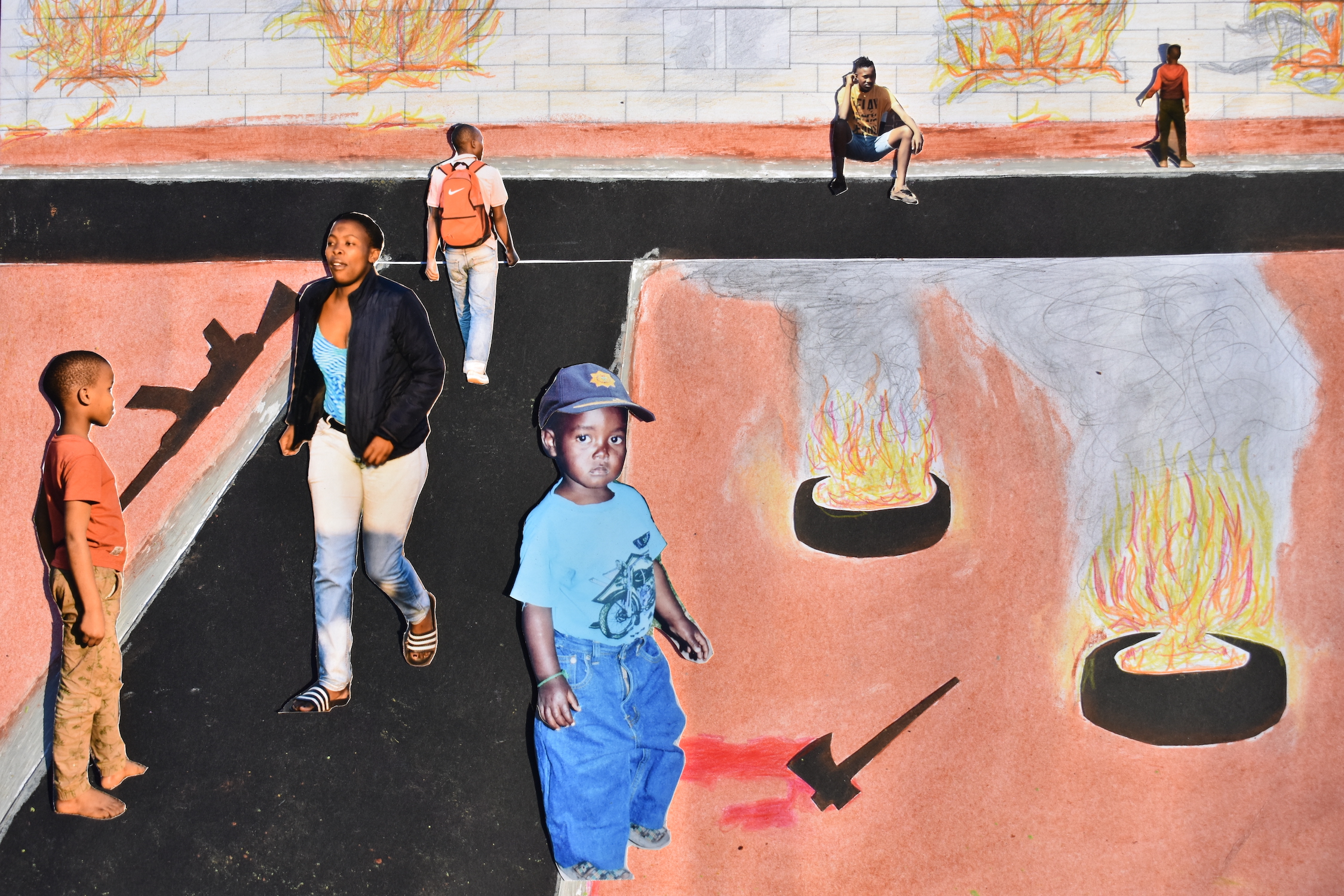
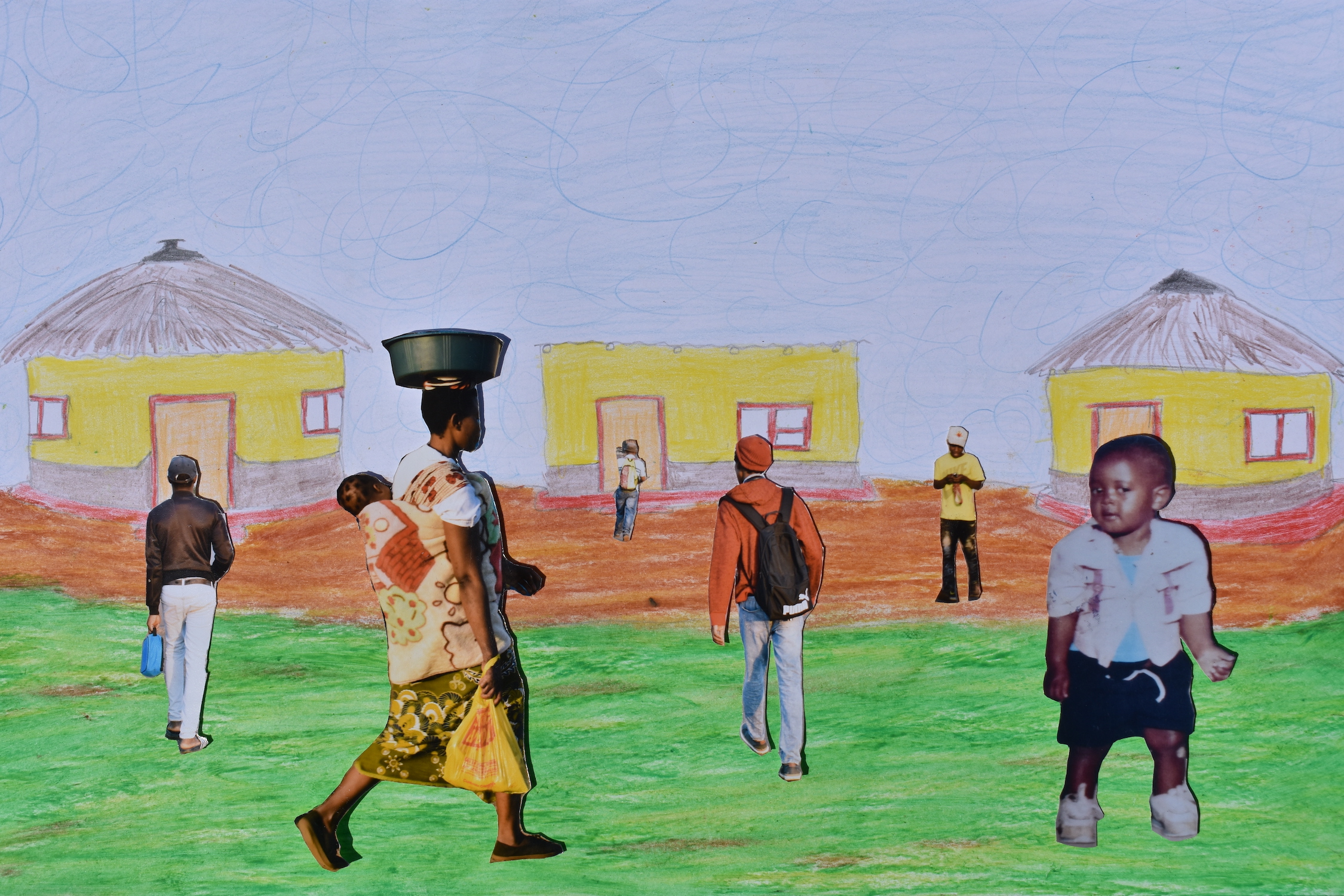
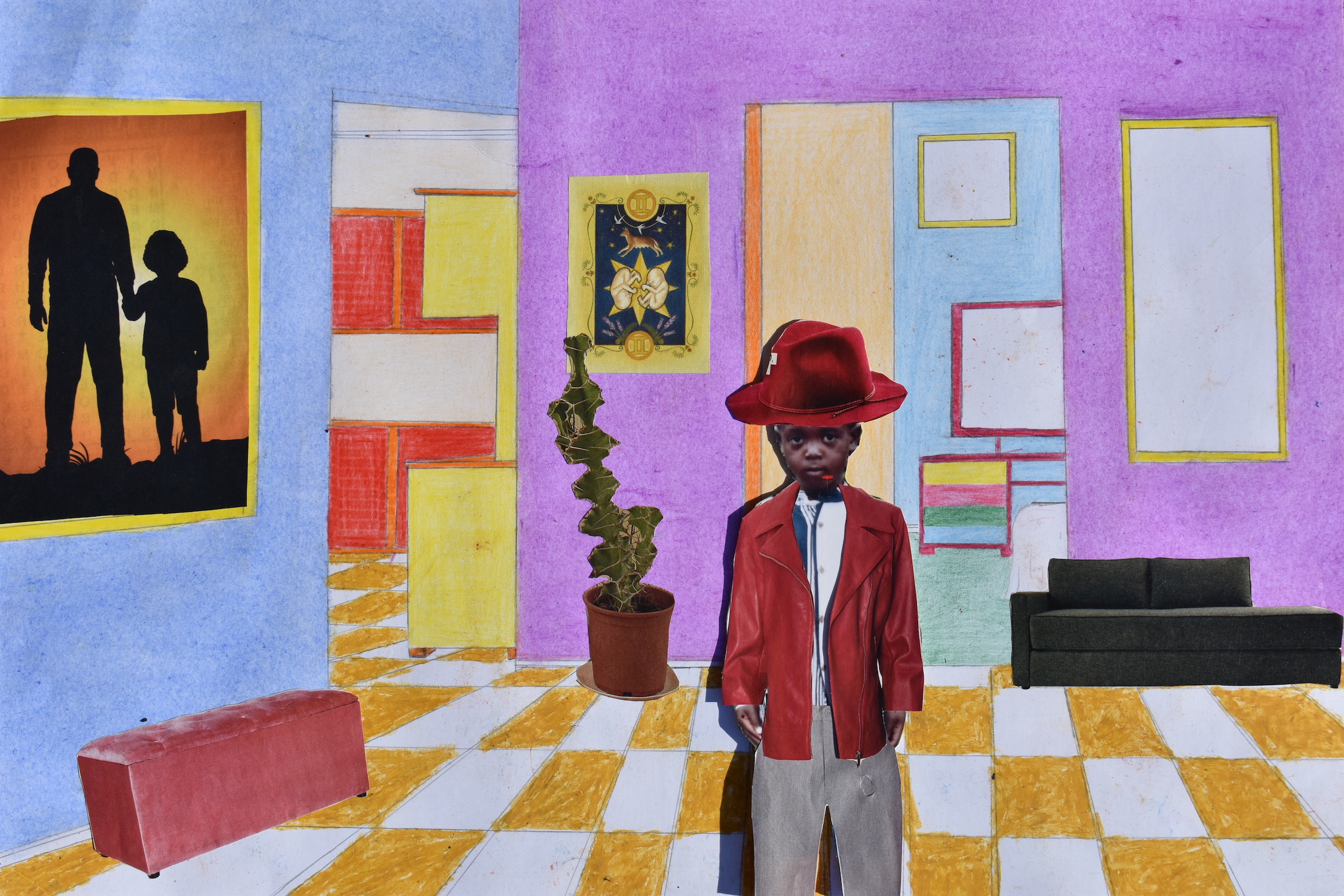
More recently, Mabheka’s work won the 2023/24 Grand Prix Images Vevey Special Jury Prize Award. “Vuyo Mabheka was one of the highlights of the Grand Prix Images Vevey,” says festival director Stefano Stoll. “From over 600 submissions, the international jury chaired by photographer Paul Graham unanimously awarded a special prize to this work combining photography, collage and drawing. Its originality lies in its autobiographical nature: this very talented young artist recounts his childhood in the townships of Johannesburg, mixing reality and fiction with a simplicity, richness and efficiency of means that is almost expressionist.”
This recognition has bolstered the artist’s confidence, and is also opening doors for further exploration and growth. “Winning the award is a significant achievement indeed, and it has brought me more exposure in the art world,” says Mabheka, whose work was first shown in 2018 in a group exhibition by Easigas and Rubis Mécénat Cultural Fund at the Stop Sign Art Gallery, Johannesburg.
As well as helping him establish his practice, the exposure means he can reach more people, from more diverse backgrounds. Navigating the balance between personal introspection and wider communication is delicate, but Mabheka hopes to tell universal stories – tales to which most can relate, and which therefore foster connections, empathy and understanding. His work also invites viewers to reflect on their own experiences, on the geographical and cultural differences from which they have benefitted with no effort on their part.
